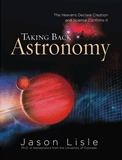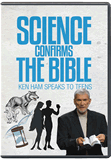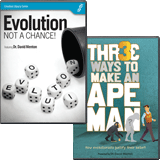News to Note, July 21, 2007
A weekly feature examining news from the biblical viewpoint
Apes on treadmills, pinpointing the origin of humans, a flood in Britain, tomato plants, Pluto’s moon, runts, and elements of design round out this week’s News to Note.
1. Which is Better: Two Legs or Four?
Every once in a while a new piece of “evidence” in the evolutionary mythology of mankind shows up that makes many wonder if evolutionists are really even listening to the assertions they’re making. Such stories, admittedly, make the job of reporting the news much more entertaining, but there seems to be no limit to the jumps in logic some researchers will make for the sake of headlines.
2. Where Man Comes From
Could this be the end of a debate that has been raging for years? Despite many claims of incontrovertible “fact” in evolutionary textbooks, researchers have been far from unified on the origin and development of modern humans (see Evolution Exposed for an in-depth look at what biology textbooks say on the issue).
3. Megaflood Makes Britain
One geological feature often used as prime evidence of gradual, millions-of-years formation is the Grand Canyon. In fact, some evolutionists are ready with lawyers should anyone even suggest a different view. They recognize that if the icons for eons of time are stripped away, then they can no longer spin whimsical yarns about supposedly ancient fossils.
4. The "Arms Race" of Bacteria
Researchers at Cornell University’s Boyce Thompson Institute have been studying how the bacterium Pseudomonas syringae “infects tomatoes by injecting a special protein into the plant’s cells and undermines the plant’s defense system.”
5. The Planet That Should Be Dead
Although Pluto is no longer classified as a planet, it is still generating headlines, or, rather, its moon, Charon, is causing some astronomers to take notice.
6. Survival of the ... Runts?
We’ve all heard it before on TV or in biology textbooks: evolution removes those members of a species that are less fit. This, after all, has been one of the assumptions about how evolution prunes the gene pool and somehow blindly selects those attributes that are better adapted to the environment.
7. Elements of design
And finally this week, we take a break from picking apart the historical preconceptions of many naturalists to examine how observational science is leading to some exciting new discoveries. Of course, these technological “breakthroughs” are not nearly as new as they may seem—God created them about 6,000 years ago.
Physorg: “Synthetic nanoadhesive mimics sticking powers of gecko and mussel”
Two Northwestern University biomedical engineers have developed a new adhesive substance that “functions like a sticky note and exhibits strong yet reversible adhesion in both air and water.” Where did they find their inspiration for this modern marvel?
Messersmith and Lee imitated a gecko’s foot by nanofabricating arrays of silicone pillars that exhibit enough flexibility to adapt to rough surfaces. Next they brought in the mussel power, coating the pillars with a very thin layer of a synthetic polymer, designed by the researchers, that mimics the wet adhesive mussel proteins.
LiveScience: “Secret to Abalone Shell Strength Revealed”
Mother-of-pearl is not just an attractive accent; it is also a heavy-duty material that could one day revolutionize structural design. An article from LiveScience explains:
Also called nacre, the material has long puzzled scientists because it is 3,000 times more break-resistant than the mineral that comprises its building blocks, aragonite. Recently, researchers have started to examine the intricacies of the hardy structure in hopes of learning how to replicate it in durable man-made materials.
[...]
Close up, the shell resembles a brick wall, with a twist. Organic mortar lies between clumps of mineral-crystal bricks aligned in irregular columns. The columns of crystals interlock like zippers, but each column faces a different direction than its neighbor.
[The researchers] predict that this irregular, interlocking design stands behind nacre’s brute force.
ScienceDaily: “Miraculous Mosquito Legs”
The mosquito may not be anyone’s favorite insect, but that doesn’t mean that the pest isn’t packed with some amazing design features.
Mosquitoes walk on water better than water striders, cling to smooth ceilings and walls as tightly as geckos, and clutch the skin of their victims with annoying tenacity in search of blood. [...]
[...]
The secret to mosquito water walking appears to be feathery scales a few microns across that in turn are covered with nanoscopic ribbing, forming what the physicists have dubbed (in an apparent fit of excessive prefixing) a micronanostructure. [...]
God’s creative power should never cease to amaze any open-minded researcher. Even what we might consider the simplest organisms display an amazing wisdom that should leave all humans in awe.
For More Information: Get Answers
Remember, if you see a news story that might merit some attention, let us know about it! (Note: if the story originates from the Associated Press, FOX News, MSNBC, the New York Times, or another major national media outlet, we will most likely have already heard about it.) And thanks to all of our readers who have submitted great news tips to us. If you didn’t catch all the latest News to Know, why not take a look to see what you’ve missed?
(Please note that links will take you directly to the source. Answers in Genesis is not responsible for content on the websites to which we refer. For more information, please see our Privacy Policy.)
Recommended Resources

Answers in Genesis is an apologetics ministry, dedicated to helping Christians defend their faith and proclaim the good news of Jesus Christ.
- Customer Service 800.778.3390
- © 2025 Answers in Genesis




